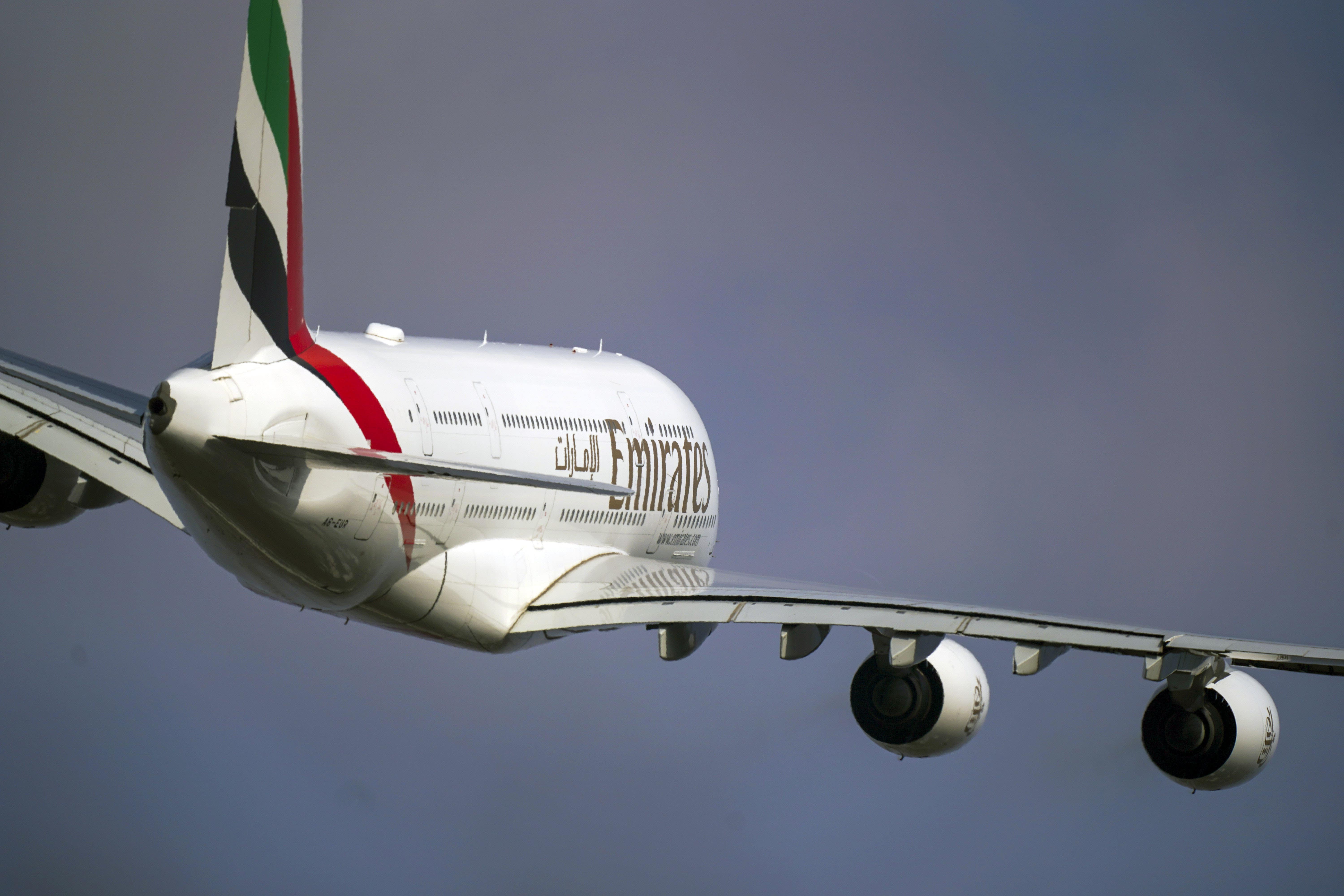World’s largest airliner returns to Glasgow for first time since 2019
The double-decker, four-engine A380 can carry 517 passengers.

The world’s largest airliner returned to Glasgow on Sunday for the first time since September 2019.
Middle Eastern carrier Emirates said its reintroduction of an Airbus A380 for flights between the Scottish city and Dubai is due to “sustained demand”.
The double-decker four-engine jets can carry 517 passengers.
Emirates has previously operated Glasgow-Dubai flights using Boeing 777s, which have 302 seats for passengers.
The airline’s UK divisional vice president, Richard Jewsbury, told the PA news agency: “The return of the A380 is purely demand driven. We’ve seen sustained demand from the Scottish market.
“Dubai is the number one destination but we’re seeing really good flows down to Australia, Thailand, the Indian subcontinent – which is very popular particularly for VFR (visiting friends and relatives) traffic – and the Indian Ocean.
“It’s about growing the capacity back.
“As we go into the summer period we’re expecting more visitors and inbound traffic from around the network.”
Glasgow Airport operations director Ronald Leitch said the airline’s Glasgow-Dubai route “continues to be a tremendous success story for Scotland”, and the reintroduction of an A380 is “a huge vote of confidence for Glasgow and the wider region”.
The flight on Sunday landed at Glasgow Airport at 12:38pm.
The vast majority of A380s around the world were put into storage at the height of the coronavirus pandemic, fuelling speculation they would never return due to the existence of more fuel-efficient aircraft.
But their ability to carry more passengers than all other commercial planes means the model is making a recovery.
Mr Jewsbury claimed the suggestion that A380s could be permanently grounded was “always ridiculous”.
He said: “I think the A380 always has been and will continue to be in high demand.
We're seeing demand running hot across the network at the moment so we need the capacity the A380 provides
“It’s a really superb product. Very spacious, very comfortable, very quiet.
“It’s one that customers go out of their way to fly on.
“We’re seeing demand running hot across the network at the moment so we need the capacity the A380 provides.”
Emirates has 80 of its A380s in service, out of a fleet of 116.
In the UK, the airline is already operating the jets at Heathrow, Gatwick and Manchester, with Birmingham flights resuming in July.
Figures from aviation analytics company Cirium show A380s are expected to be used for 5,857 commercial passenger flights across all airlines this month.
That remains 40% below the total for March 2019 before the virus crisis began but represents an 80% increase from a year ago.
Earlier this week, Lufthansa became the latest airline to confirm it will reactivate its A380s this summer, with flights on the Munich-New York and Munich-Boston routes.
Aviation consultant John Strickland, of JLS Consulting, said one of the reasons the plane is popular with passengers is that “even if you sit in economy there’s a much greater sense of space”.
But some airlines have not announced plans to bring their fleets out of long-term storage while Air France permanently retired its A380s in May 2020.
Mr Strickland believes the current demand for air travel means some carriers may “regret” not giving themselves an option to use the planes.
“In sheer capacity terms, I think airlines who had them could largely use them,” he said.
Emirates’ use of the aircraft on flights to Dubai makes it “much easier” for the airline to fill connecting planes to Africa, Asia and Australia, he explained.
British Airways has a dozen A380s which are deployed on routes between London and US destinations such as San Francisco, Los Angeles, Miami, Chicago and Dallas, as well as South Africa for holidaymakers seeking winter sun.
The airline is “very happy to have that capacity back”, Mr Strickland added.





